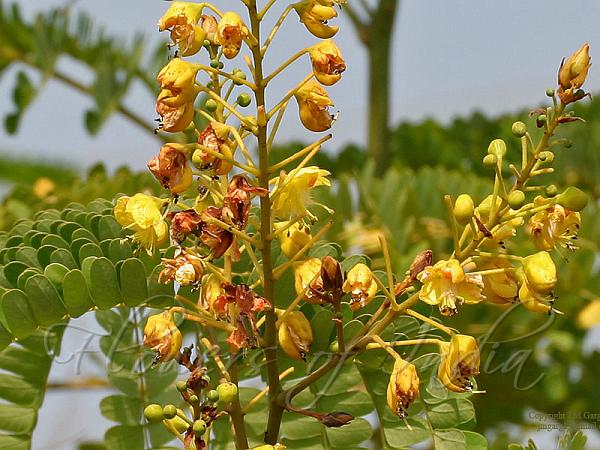|
| Sappan Wood |
|

|

| File size | 161774 |
| Original date | 10/31/09 10:46 AM |
| Resolution | 800 x 600 |
| Flash | Flash did not fire, auto |
| Focal length | 170.0mm |
| Exposure time | 1/125s |
| Aperture | 10.0 |
| Focus Distance | |
| Metering Mode | Multi-segment |
| Camera make | Canon |
| Camera model | Canon EOS 350D DIGITAL |
| Sensor type |
|
|
|
|
Photo: |
Botanical name: Caesalpinia sappan Family: Caesalpiniaceae (Gulmohar family)
Synonyms: Biancaea sappan
Synonyms: Biancaea sappan
Sappan Wood is a small thorny tree, 6-9 m in height and 15-25 cm in trunk
diameter with a few prickly branches. Leaves are double-compound,
alternately arranged, 20-45 cm long, 10-20 cm broad, with 8-16 pairs of up
to 20 cm long side-stalks. Side-stalks are prickles at the base and with
10-20 pairs of oblong, 10-20 mm x 6-10 mm long leaflets, very oblique at
base, rounded to notched at the tip. Yellow flowers are borne panicles in
leaf axils and at the end of branches. Flowers fragrant, 2-3 cm long,
5-merous. Stamens are waxy-white, filaments densely woolly
at the base. Fruits are woody pods, compressed with a hard recurved short
beak, with 3-4 seeds. The heartwood which is used in medicine is light
yellow when freshly cut, but it quickly changes to red. The color diffuses
out easily in hot water. In about 7-10 hours the extract becomes deep
orange in color. Sappan-wood was a major trade good during the 17th
century, when it was exported from Southeast Asian nations aboard red seal
ships to Japan.
| Identification credit: J. M. Garg | Photographed in Herbal Garden, Hyderabad, Andhra Pradesh. |
• Is this flower misidentified? If yes,